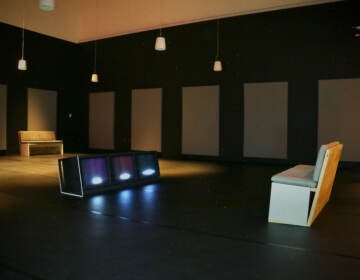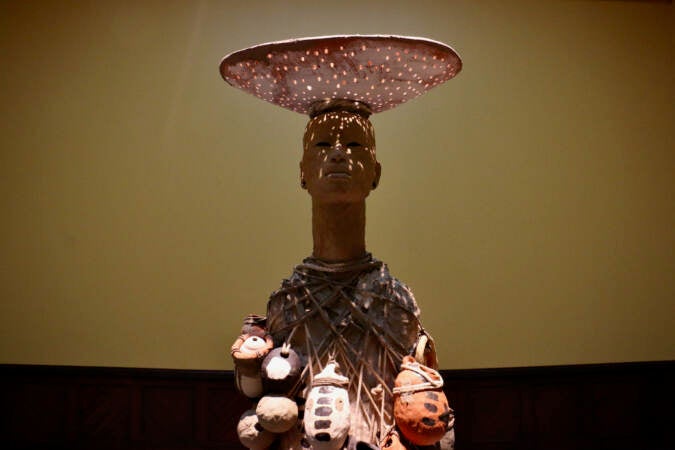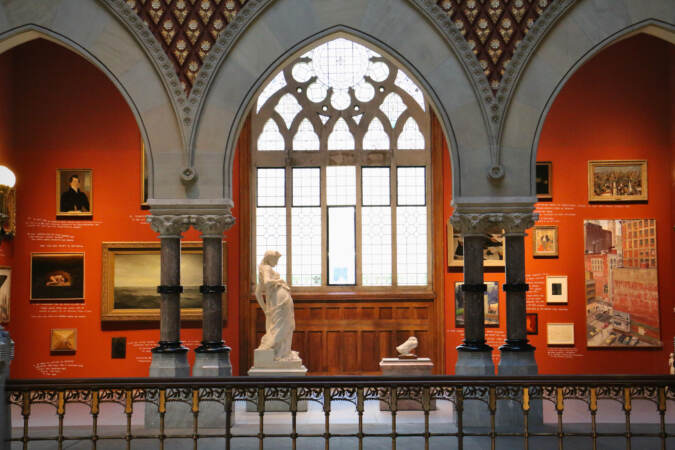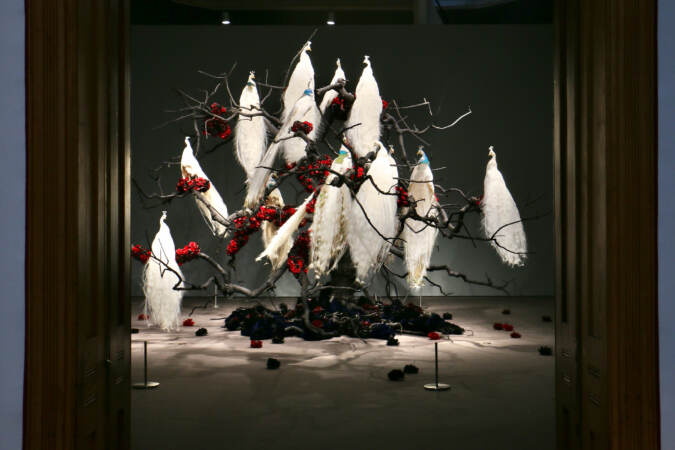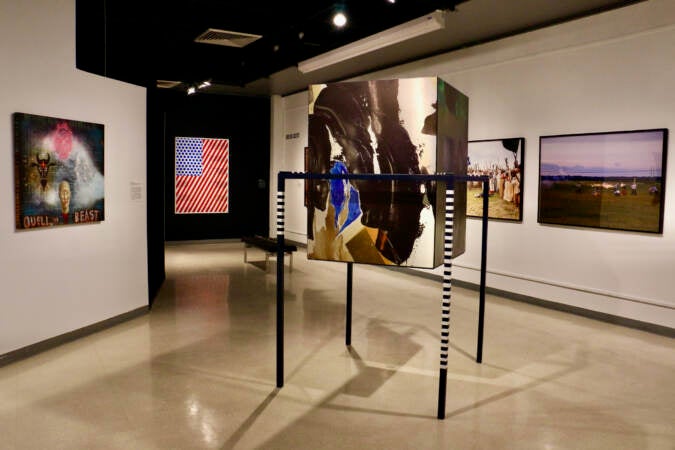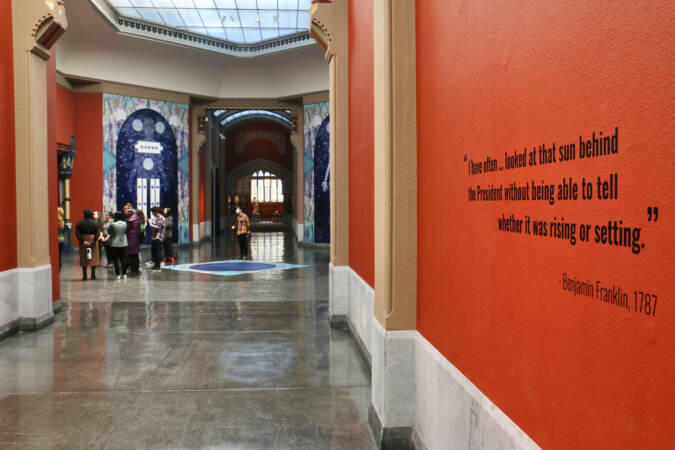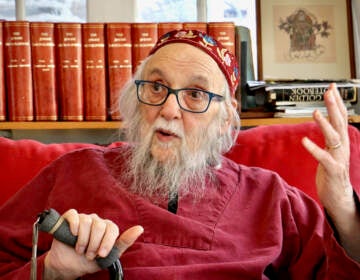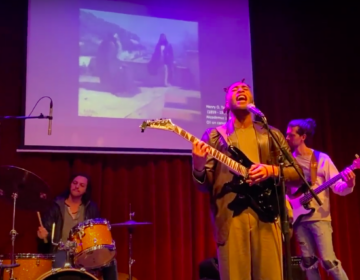Is the sun rising or setting on democracy? 20 artists offer ideas at 2 Philly museums
In a rare collaboration, PAFA and AAMP ask artists to consider the state of U.S. democracy.
Listen 1:21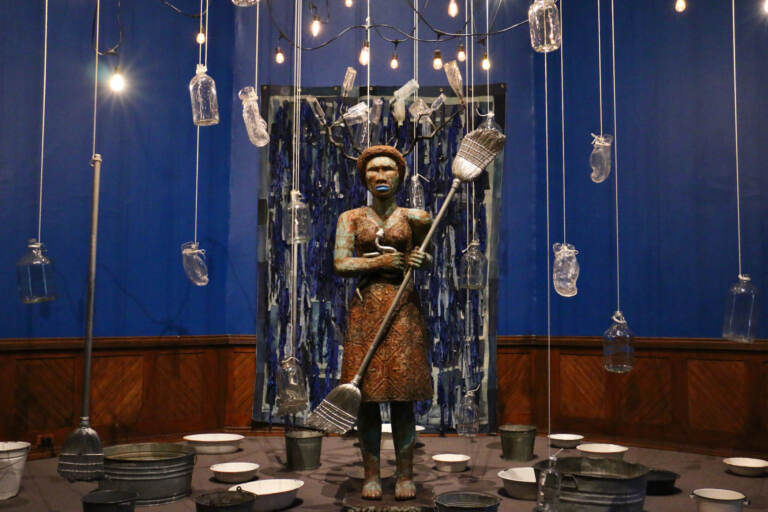
Alison Saar's "Hygiea," at the Pennsylvania Academy of Fine Arts, features a figure of the Greek goddess of health and saniation. The work is included ion PAFA's collaborative exhibit with the African American Museum in Philadelphia, "Rising Sun: Artists in an Uncertain America." (Emma Lee/WHYY)
During the Constitutional Convention of 1787 in Philadelphia’s Independence Hall, as the Founding Fathers were hammering out what would become the United States Constitution, Benjamin Franklin spent time staring at George Washington’s chair. It has an ornate backrest carved with a half sun peeking out over a horizon.
Musing on the curious decoration, Franklin pondered aloud if the sun was rising, or setting on the still-green American experiment in democracy.
Ever the optimist, he settled on the former.
Now, the Pennsylvania Academy of the Fine Arts and the African American Museum in Philadelphia have each cleared out their galleries to make room for a reconsideration of Franklin’s question.
“Rising Sun” is a rare collaborative exhibition across both institutions, which asked 20 artists to make work in response to Franklin’s query. Originally conceived in 2019 by PAFA’s former curator Jodi Throckmorton, she had approached AAMP curator Dejay Duckett with the idea, who immediately thought of the 1900 hymn by James Weldon Johnson, “Lift Every Voice and Sing,” often called the Black National Anthem.
Facing the rising sun of our new day begun,
Let us march on ’til victory is won.
“Do we still feel that way? Are we still facing the rising sun?” Duckett asked. “You have Ben Franklin on one hand and Johnson on the other. These artists are recalibrating, using their practice to think about the questions of where we are as a country.”
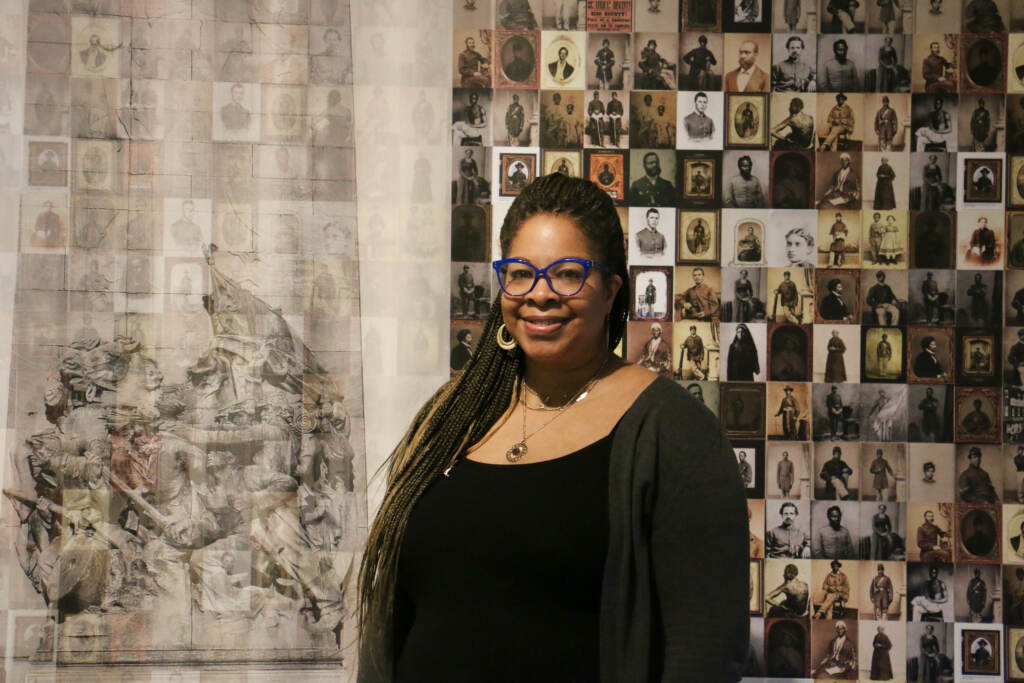
Some artists took the rising/setting concept more literally than others. Eamon Ore-Giron created two monumental paintings for a space in PAFA’s historic Frank Furness-designed building where they face each other across a grand staircase. Called Black Medallion XIV (Inti), and Black Medallion XV (Mama-Quilla), they are each abstracted horizons painted with geometric shapes, predominately in gold and black. Ore-Giron conceived one to be dawn and the other dusk.
The Black Medallions occupy the space of two other monumental-sized paintings that have hung in those spaces inside PAFA for many years: Benjamin West’s “Christ Rejected” (1814) and “Death on the Pale Horse” (1817). The historic West paintings are still there: They are too large to remove from the building so PAFA built false walls over them to accommodate Ore-Giron’s meditations on blackness.
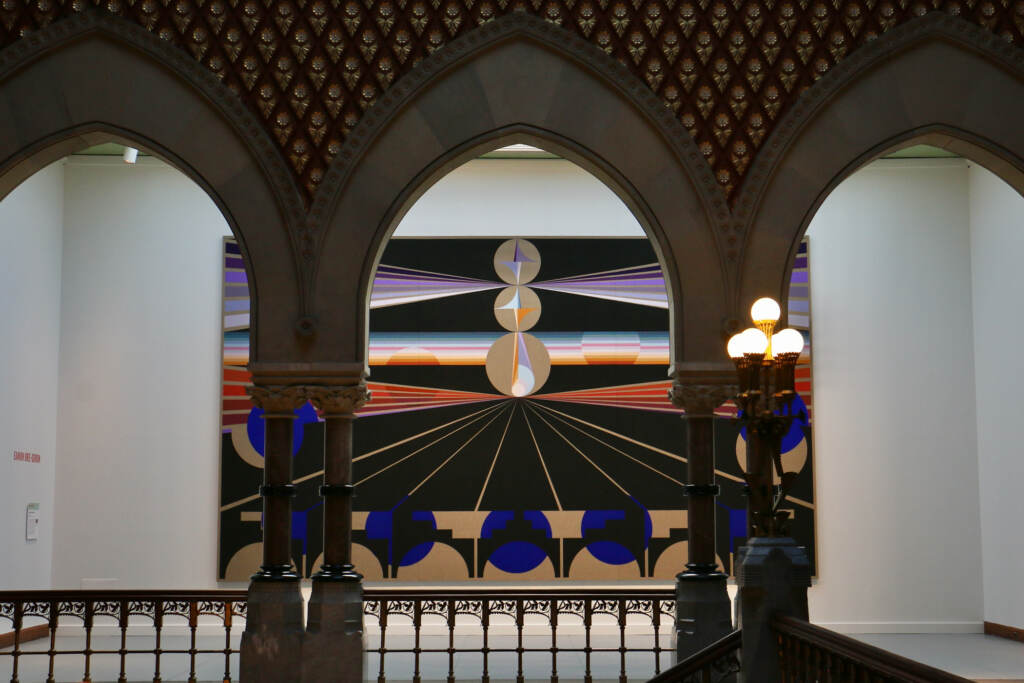
Many of the artists shown at PAFA made work in response to the architecture. Saya Woolfalk installed large-scale animated projections in the building’s rotunda, with a mandala-like vinyl floor covering in the middle. Petah Coyne took over a gallery to install an apple tree with a flock of white peacocks perched on its branches.
The tree had been nurtured into its shape for a decade by the sculpture, and the white peacocks are real, taxidermied birds set in a dramatic scene with silk flowers dipped in wax, colored black, dark blue, and deep red.
“The white peacocks are beautiful,” said Dr. Anna Marley, PAFA’s Chief of Curatorial Affairs. “But it’s a little somber.”
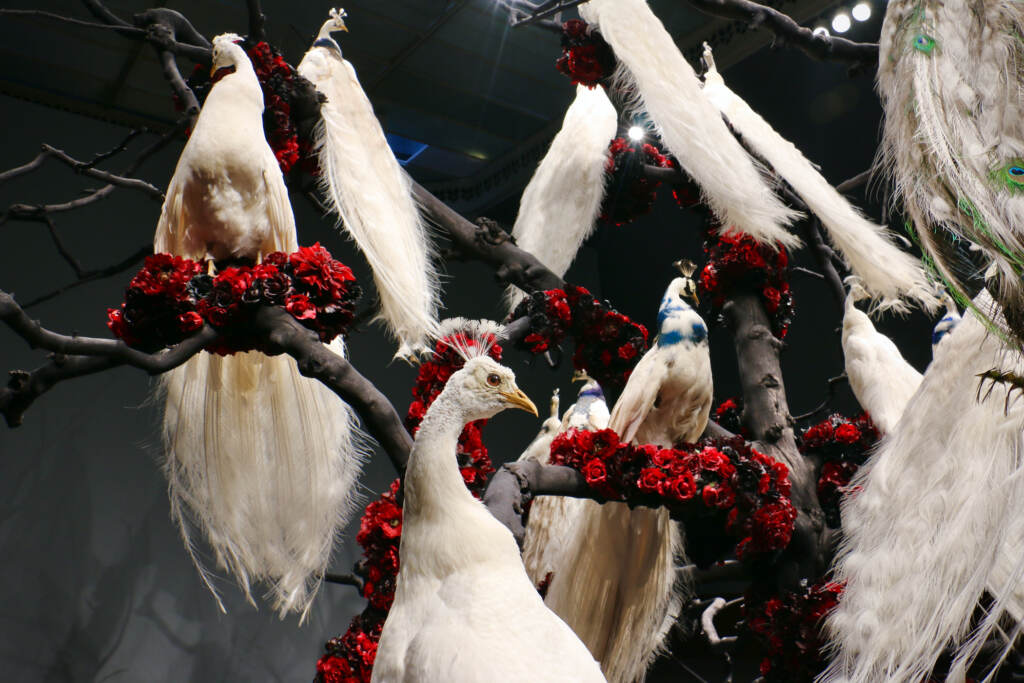
This is the “setting sun” portion of the piece, called “Two Halves of the Same Soul.” As the title promises, there is a second part tucked into the attic space directly above the tree. Visitors can climb a staircase built out of plywood, up to the skylight where one of the glass panes has been removed. Those who poke their head through the opening will see there is another second roof of skylights above the ceiling, the original skylight designed by Frank Furness, filling the attic space with light, i.e., the “rising sun.”
There, Coyne has installed eleven colorful bouquets of silk flowers dripping with wax. Each bouquet is named after a woman the artist admires: Toni Morrison, Zora Neale Hurston, Sylvia Plath, Flannery O’Connor, etc.
“She sees that going up to the skylight as a sort of hopefulness of the next generation,” said Marley. “This is a unique opportunity that most people will never, ever have at PAFA. Above our skylight galleries there’s a whole other world up there, that is the skylight space.”
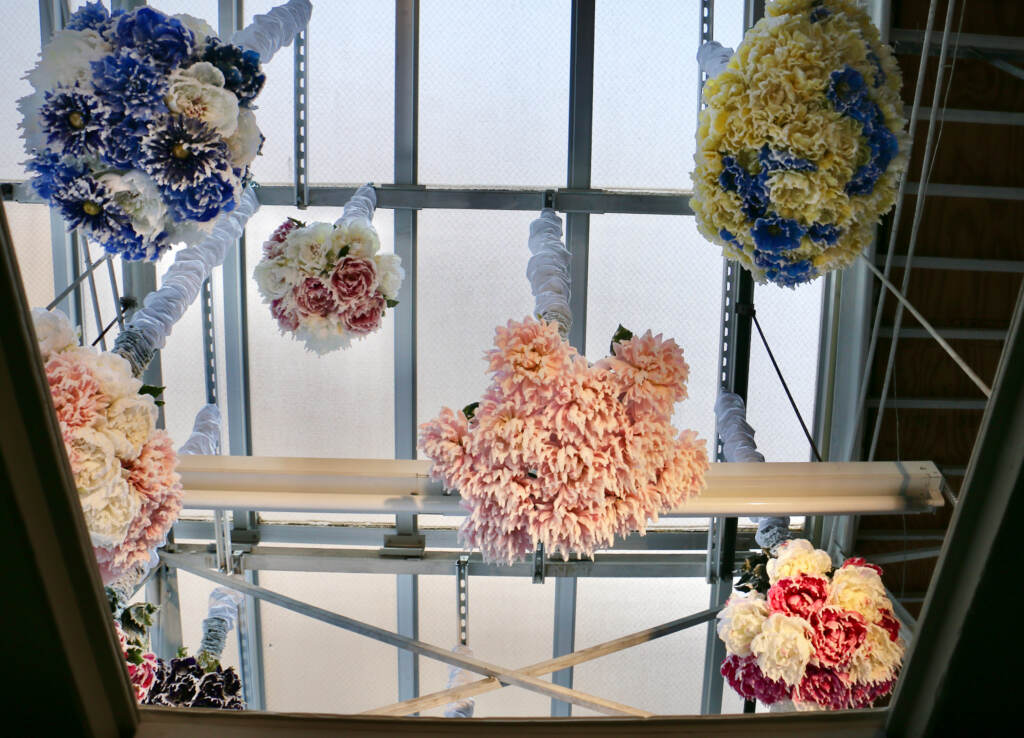
For visitors that don’t care to climb plywood stairs, the skylight world above the gallery can be seen, at ground level, in a panoramic video.
Other artists did not feel the need to address the rising/setting sun theme directly. Lenka Clayton selected dozens of artworks from the PAFA collection to illustrate a whimsical story of how the broken pieces of a doomed marble sculpture of the goddess Demeter wound up at PAFA, carved by a student into a duck.
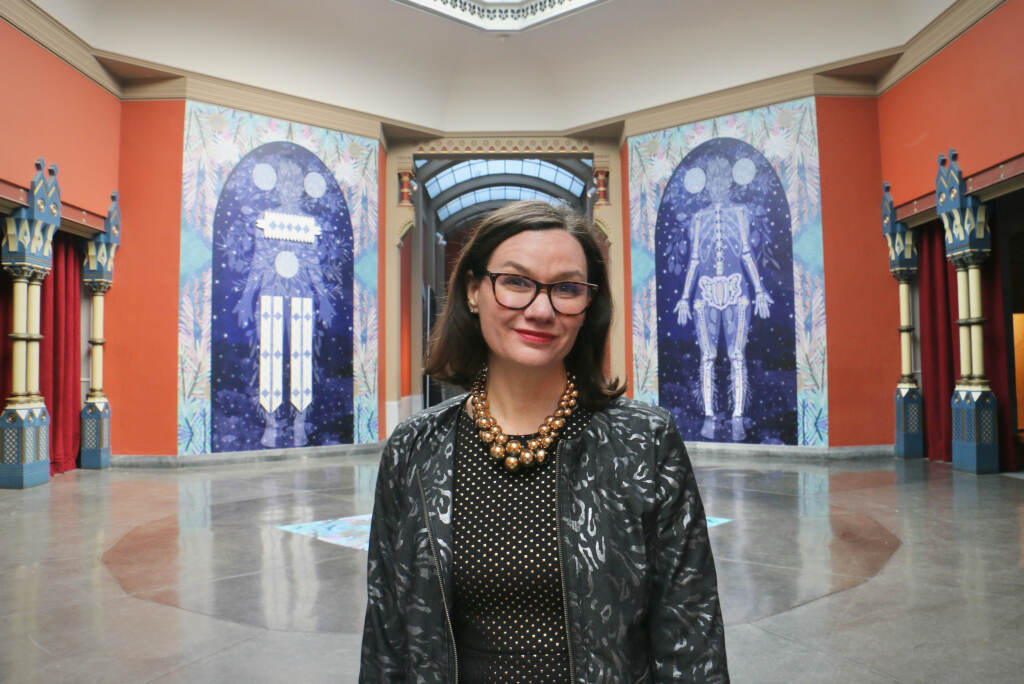
“It really depends on the artists and how literally they interpreted the prompt,” said Marley. “Both Jodi and Dejay felt that this should be artist-led, that the artists shouldn’t have to answer the question. The question was put out there and that could inspire them to create anything they wanted.”
At AAMP, the question of the sun rising or the sun setting on American democracy was not new to some artists. Renee Stout submitted some works she had been making for years, such as her “Hoodoo Assassins” series, where she illustrates an army of contemporary people, often based on people she knows personally, infused with unique, lethal skills inspired by African mythology: such as a poisonous herbs specialist, and a figure whose dreadlocks act as antennae to communicate with ancestors.
“As we were first talking about the show, she said, ‘I think it’s important that people understand that these are not new concepts,’” Duckett recalled. “’I’ve been thinking about this for a long time, about democracy and where we’re going.’”
Artist Deborah Willis made an installation, “Face the Rising Sun,” directly referencing Johnson’s “Lift Every Voice and Sing.” The piece is a wall filled with tintype portraits of Black Americans of the mid-19th century, those who were soldiers in the Civil War and those who fought on the battlegrounds for abolition.
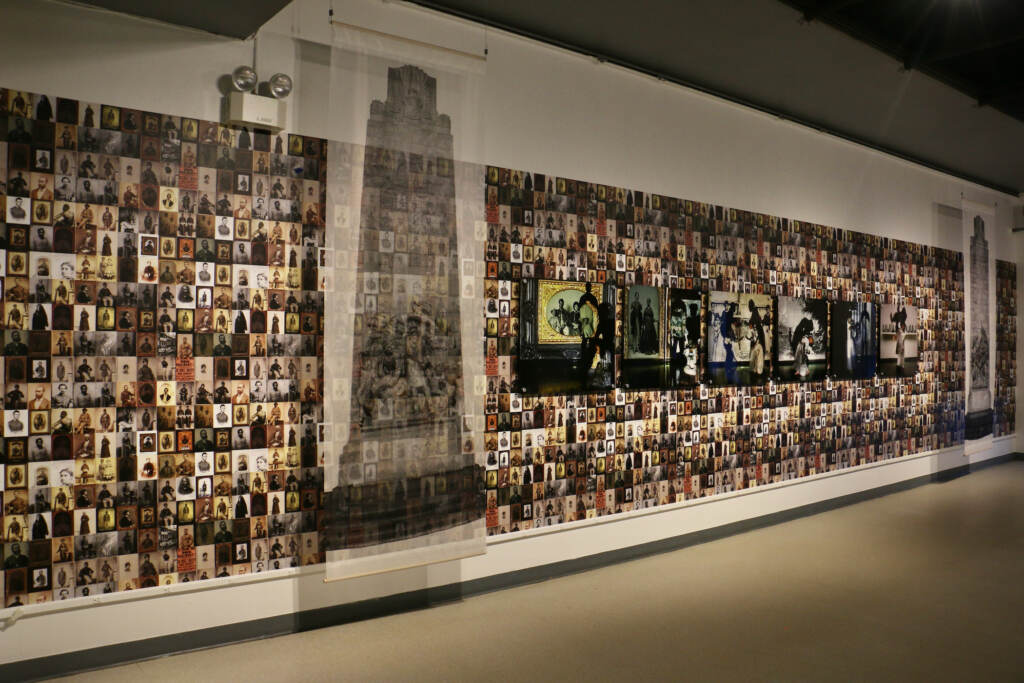
Willis made the work specific to Philadelphia, by including scrims printed with photos of Philly war monuments.
“There are things that you pass by every day around the city,” said Duckett. “She really forces us to take notice of these spaces and these lives, their sacrifices and their activism and citizenship. They’re working for democracy.”
“Rising Sun,” at both locations, will be on view until Oct. 8. Marley said when the show comes down, many pieces from PAFA’s collection will be crisscrossing the country as part of the “Making American Artists” touring exhibition.
The Frank Furness building will not be re-hung as it had been for many years with the historic pieces from the collection.
“We are going to be reimagining this space,” said Marley. “We are cooking up a really exciting reinstallation of the entire collection, including commissions from Rising Sun and the works that are going on tour to bring together for 2026, as Philadelphia gets ready for Philadelphia250 [semiquincentennial celebration].”

Saturdays just got more interesting.
WHYY is your source for fact-based, in-depth journalism and information. As a nonprofit organization, we rely on financial support from readers like you. Please give today.



